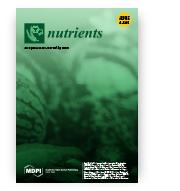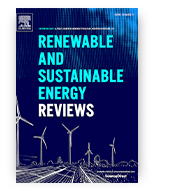Circulating Insulin and IGF-1 and Frequency of Food Consumption during Pregnancy as Predictors of Birth Weight and Length
Dominika Mazurkiewicz, Monika Bronkowska
Nutrients
 The aim of the study was to assess the relationships between maternal insulin and insulin-like growth factor-1 (IGF-1) concentration and food consumption frequency and the birth parameters of the newborn. A total of 157 mother-newborn pairs participated in the study. The study showed that more frequent consumption of sweet and salty snacks as well as fruit and fruit or vegetable juices may promote greater weight gain in pregnancy and higher newborn birth weight. A significantly higher insulin concentration was found among overweight women according to body mass index (BMI), and a significantly lower concentration of IGF-1 was demonstrated among women ≥35 years of age. There was no significant correlation between the concentration of insulin and IGF-1 in the mother’s blood plasma and the birth weight and length of the newborn. A significant relationship was only found between the concentration of IGF-1 in the mother’s blood and the Ponderal index of the newborn. A woman’s eating habits during pregnancy have a significant impact on the mother’s health and on the proper growth and development of the foetus.
The aim of the study was to assess the relationships between maternal insulin and insulin-like growth factor-1 (IGF-1) concentration and food consumption frequency and the birth parameters of the newborn. A total of 157 mother-newborn pairs participated in the study. The study showed that more frequent consumption of sweet and salty snacks as well as fruit and fruit or vegetable juices may promote greater weight gain in pregnancy and higher newborn birth weight. A significantly higher insulin concentration was found among overweight women according to body mass index (BMI), and a significantly lower concentration of IGF-1 was demonstrated among women ≥35 years of age. There was no significant correlation between the concentration of insulin and IGF-1 in the mother’s blood plasma and the birth weight and length of the newborn. A significant relationship was only found between the concentration of IGF-1 in the mother’s blood and the Ponderal index of the newborn. A woman’s eating habits during pregnancy have a significant impact on the mother’s health and on the proper growth and development of the foetus.
DOI:10.3390/nu13072344
Can rural stakeholders drive the low-carbon transition? Analysis of climate-related activities planned in local development strategies in Poland
Marek Furmankiewicz, Richard J. Hewitt, Jan Kazak
Renewable & Sustainable Energy Reviews
 In the postulated efforts to limit adverse climate change (CC), increasing attention is paid to the development of distributed renewable energy (RE) that meets the needs of local communities on the spot. This article analyses the objectives, planned actions and performance indicators related to CC and RE, defined by national and local stakeholders in: (1) the national Rural Development Programme (RDP) 2014–2020 in Poland and (2) in the bottom-up Local Development Strategies (LDS) financed from RDP and using a Community-Led Local Development approach. The content analysis method was used. We found that the strategy documents considered, created in the years 2014–2015, paid relatively little attention to local actions related to CC and RE. Some educational activities related to adaptation and mitigation of CC were planned in 66% of LDS, while investment support for RE was planned only in 9% of the LDS. Traditional goals such as supporting local businesses and farmers, local cultural heritage and the development of human and social capital were seen as more important. The results of the analysis suggest a relatively low level of interest from rural-policy actors in Poland in implementing the climate-friendly objectives of the Europe 2020 strategy. This article contributes to understanding why Poland failed to meet the European 2020 RE development goals. These issues are discussed in the context of national and continental climate policy and problems of transformation to post-carbon society.
In the postulated efforts to limit adverse climate change (CC), increasing attention is paid to the development of distributed renewable energy (RE) that meets the needs of local communities on the spot. This article analyses the objectives, planned actions and performance indicators related to CC and RE, defined by national and local stakeholders in: (1) the national Rural Development Programme (RDP) 2014–2020 in Poland and (2) in the bottom-up Local Development Strategies (LDS) financed from RDP and using a Community-Led Local Development approach. The content analysis method was used. We found that the strategy documents considered, created in the years 2014–2015, paid relatively little attention to local actions related to CC and RE. Some educational activities related to adaptation and mitigation of CC were planned in 66% of LDS, while investment support for RE was planned only in 9% of the LDS. Traditional goals such as supporting local businesses and farmers, local cultural heritage and the development of human and social capital were seen as more important. The results of the analysis suggest a relatively low level of interest from rural-policy actors in Poland in implementing the climate-friendly objectives of the Europe 2020 strategy. This article contributes to understanding why Poland failed to meet the European 2020 RE development goals. These issues are discussed in the context of national and continental climate policy and problems of transformation to post-carbon society.
DOI:10.1016/j.rser.2021.111419









